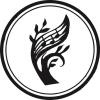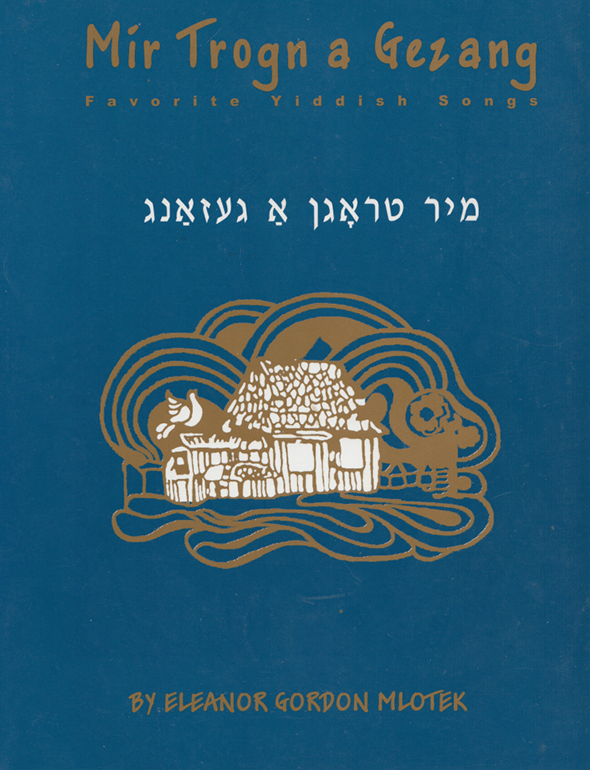
Leybke, my dear, that will not make up for anything,
you are driving me crazy with your stubbornness,
you have to learn to dance, I swear on our life,
if not, it is over with us now –
you may be what you are,
a committed Zionist
a bit of a Bundist, who cares?
For some time now, all the -ists
and even the Agudah people
dance the Charleston.
Come, Leybke, dance, don’t be shy,
I will lead you one step at a time,
Stand, my dear
across from me
and begin together with me.
Hold me tight, Leybke, my crown,
That I’m sure you already know how to do,
now let us glide –
Ah, what a life
when a couple dances the Charleston.
Leybke, to thoroughly understand men
my best thermometer is when I dance with them,
which are already married and which still free
I can already tell by the first turn,
I can feel as soon as the dance begins,
and therefore, Leybke, my crown,
I want you to learn, in fact right now,
the tango and the Charleston.
Leybke, mayn liber, dos vet keyn guts nisht gebn,
Du brengst mit dayn akshones mikh fun geduld aroys,
Du muzst zikh lernen tantsn, ikh shver bay undzer lebn,
Ele nisht, iz haynt nokh mit undz oys
Megst zikh zayn vos du bist;
A farbrenter tsienist,
A bundovyets, vemen geyt dos on?
Ale istn zayt a tsayt,
Un oykh di agude-layt,
Tantsn tango un tsharleston.
Kum, Leybke, tantsn, shem zikh nit,
lkh vel dir firn shrit bay shrit,
Shtel zikh, mayn liber,
Akegn iber
Un heyb tsuzamen mit mir on,
Nem fest arum mikh, Leybke kroyn,
Dos veys ikh zikher kenstu shoyn,
ltst lomir shvebn-
Akh, s’ara lebn,
Ven s’tantst a porl tsharleston.
Leybke, di mener, zey grintlekh tsu derkenen,
Mayn bester termometer iz ven ikh tants mit zey,
Velkhe shoyn bavaybte un velkhe fray nokh zenen,
Dos dergey ikh shoyn baym ershtn drey:
Ver es iz a fayner man,
Ver a lump, a sharlatan,
Fil ikh, ven der tants nor heybt zikh on,
Un derfar, Leybke kroyn,
Vil ikh dikh, un take shoyn,
Lernen tango un tsharleston.
לײבקע, מײַן ליבער, דאָס װעט קײן גוטס נישט געבן,
דו ברענגסט מיט דײַן עקשנות מיך פֿון געדולד אַרױס,
דו מוזסט זיך לערנען טאַנצן, איך שװער בײַ אונדזער לעבן,
אלא נישט, איז הײַנט נאָך מיט אונדז אױס —
מעגסט זיך זײַן װאָס דו ביסט:
א פֿאַרברענטער ציוניסט,
אַ בונדאָװיעץ, װעמען גײט דאָס אָן ?
אַלץ איסטן זײַט אַ צײַט,
און אױך די אַגודה-לײַט,
טאַנצן טאַנגאָ און טשאַרלעסטאָן.
קום, לײבקע, טאַנצן, שעם זיך ניט,
איך װעל דיר פֿירן שריט בײַ שריט,
שטעל זיך, מײַן ליבער,
אַקעגן איבער
און הײב צוזאַמען מיט מיר אָן,
נעם פֿעסט אַרום מיך, לײבקע קרױן,
דאָס װײס איך זיכער קענסטו שױן,
איצט לאָמיר שװעבן —
אַך, ס’אַראַ לעבן,
װען ס׳טאַנצט אַ פּאָרל טשאַרלעסטאָן.
לײבקע, די מענער, זײ גרינטלעך צו דערקענען,
מײַן בעסטער טערמאַמעטער איז װען איך טאַנץ מיט זײ,
װעלכע שױן באַװײַבטע און װעלכע פֿרײַ נאָך זענען,
דאָס דערגײ איך שױן בײַם ערשטן דרײ:
װער עס איז אַ פֿײַנער מאַן,
װער אַ לומפּ, אַ שאַרלאַטאַן,
פֿיל איך, װען דער טאַנץ נאָר הײבט זיך אָן,
און דערפֿאַר, לײבקע קרױן,
װיל איך דיך, און טאַקע שױן,
לערנען טאַנגאָ און טשאַרלעסטאָן.
Song Title: Kum, Leybke, Tantsn

First published in 1972, Mir Trogn A Gezang: Favorite Yiddish Songs was reprinted six more times (in 1977, 1982, 1985, 1987, 1988, 2000) due to popular demand. The songs in this anthology represent a sampling of beloved folk and well-known Yiddish songs, many of which are scattered in various song collections; some appear in very rare and inaccessible collections; and some were never before published. Folk songs comprise about a third of this volume and were selected mainly on the basis of popularity and sometimes for their historic significance. Needless to say, they are only representative of the vast, rich treasure of Yiddish folk material. The selection was made not only on the basis of personal preference, but in the knowledge they are favorites of many who sing these songs. Most of the songs represent the repertoire that was sung at Yiddish summer camps, May 1st demonstrations and at social gatherings. Many songs were introduced to American Jewry by Jewish immigrants who came to the United States after World War II, for whom these songs had been favorites in Poland and other East European communities destroyed by the Nazis.